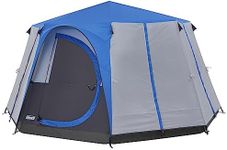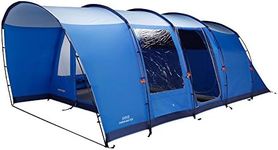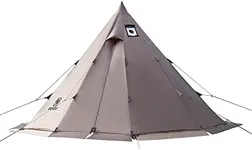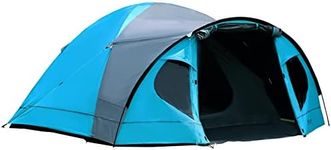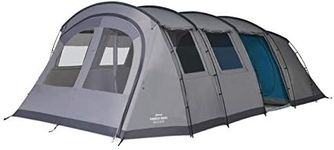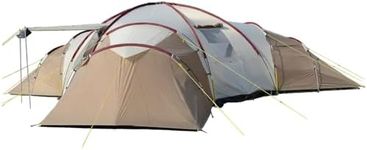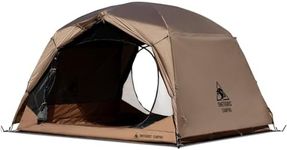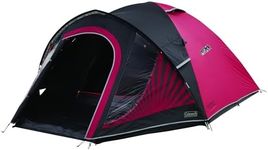Buying Guide for the Best Camping Tents For Families
Choosing the right camping tent for your family can make a significant difference in your outdoor experience. A good family tent should provide enough space, comfort, and protection from the elements. When selecting a tent, consider the size of your family, the type of camping you plan to do, and the weather conditions you might encounter. Here are some key specifications to help you make an informed decision.CapacityCapacity refers to the number of people a tent can accommodate. This is important because you want to ensure everyone has enough space to sleep comfortably. Tents are usually rated by the number of people they can fit, such as 4-person, 6-person, etc. For a family, it's often a good idea to choose a tent that can accommodate at least one more person than the number of people in your group to allow for extra space for gear and movement. If you have a family of four, consider a 5 or 6-person tent.
SeasonalitySeasonality indicates the types of weather conditions a tent is designed to handle. This is crucial for ensuring your family's comfort and safety. Tents are typically categorized as 3-season or 4-season. A 3-season tent is suitable for spring, summer, and fall, providing good ventilation and protection from rain. A 4-season tent is designed for harsher conditions, including heavy snow and strong winds, making it ideal for winter camping. Choose a tent based on the typical weather conditions you expect to encounter during your camping trips.
WeightWeight is the total mass of the tent when packed. This is important if you plan to carry the tent over long distances, such as during backpacking trips. Tents can range from lightweight models, which are easier to carry but may offer less space and durability, to heavier models that provide more comfort and sturdiness. For car camping, weight is less of a concern, so you can opt for a more spacious and durable tent. For backpacking, prioritize a lighter tent to ease the burden of carrying it.
SetupSetup refers to how easy or difficult it is to pitch the tent. This is important because a tent that is difficult to set up can be frustrating, especially with children. Some tents come with color-coded poles and clips for easier assembly, while others may require more time and effort. Instant or pop-up tents are the easiest to set up, often taking just a few minutes. If you are new to camping or want to minimize setup time, look for a tent with a straightforward setup process.
Weather ResistanceWeather resistance indicates how well a tent can protect you from rain, wind, and other elements. This is crucial for keeping your family dry and comfortable. Look for tents with a high waterproof rating (measured in millimeters) and features like a full-coverage rainfly, sealed seams, and a durable floor. Tents with good ventilation will also help reduce condensation inside. If you expect to camp in wet or windy conditions, prioritize a tent with strong weather resistance.
VentilationVentilation refers to the airflow within the tent. This is important for preventing condensation and maintaining a comfortable temperature inside. Tents with multiple windows, mesh panels, and vents provide better airflow. In hot weather, good ventilation helps keep the tent cool, while in cold weather, it helps reduce moisture buildup. If you plan to camp in warm climates or during the summer, choose a tent with ample ventilation features.
Interior Space and LayoutInterior space and layout refer to the design and usable area inside the tent. This is important for ensuring everyone has enough room to sleep and move around. Look for tents with a high peak height if you want to stand up inside, and consider the floor area to ensure it meets your family's needs. Some tents have multiple rooms or dividers for added privacy, which can be beneficial for families. Think about how much space you need for sleeping, storing gear, and spending time inside the tent.
